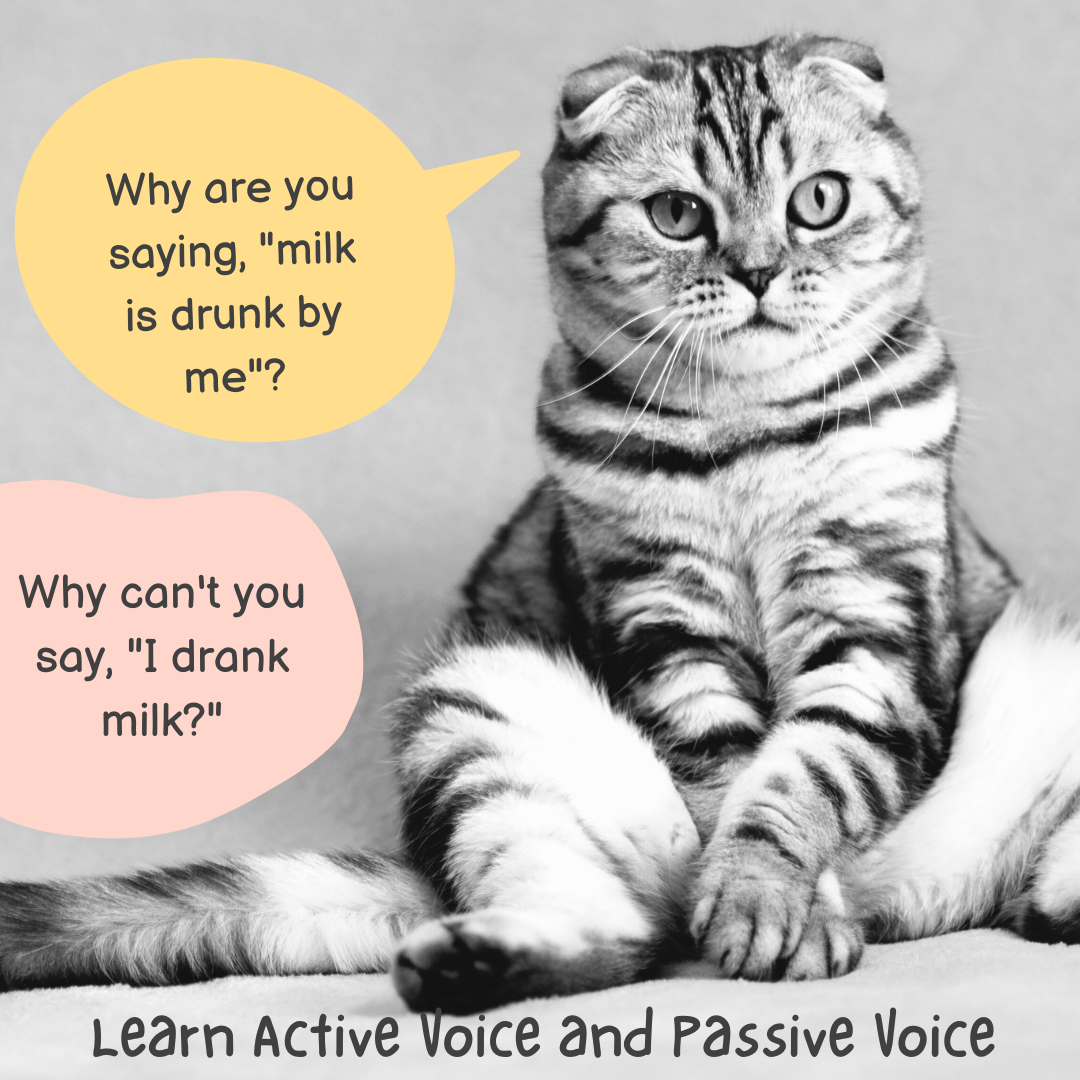Active voice and passive voice are two ways of constructing sentences in English, and they refer to the way in which the subject and object of a sentence are related to each other.
In active voice, the subject performs the action described by the verb, and the object receives the action. For example, in the sentence “John ate the pizza,” “John” is the subject, “ate” is the verb, and “the pizza” is the object. The sentence is in active voice because the subject “John” is performing the action of eating the pizza.
In passive voice, the object of the sentence becomes the subject, and the verb is changed to a passive form. For example, the sentence “The pizza was eaten by John” is in passive voice because the object “the pizza” has become the subject, and the verb “was eaten” is in the passive form.
Passive voice can be useful in some situations, such as when the focus of the sentence is on the object rather than the subject or when the subject is unknown or unimportant. However, an active voice is generally more direct, clear, and concise and is therefore preferred in most cases.
How to use active and passive voice?
Active voice and passive voice are two ways of expressing the same idea in a sentence but with a different focus. In active voice, the subject of the sentence is performing the action, while in passive voice, the subject of the sentence is receiving the action.
To use active voice, start with the subject of the sentence and follow it with a verb in the appropriate tense. For example, “The cat chased the mouse.” In this sentence, “the cat” is the subject, and “chased” is the verb. The sentence is in active voice because the subject is performing the action.
To use passive voice, start with the object of the sentence and follow it with a form of the verb “to be” and a past participle. For example, “The mouse was chased by the cat.” In this sentence, “the mouse” is the object, and “was chased” is the passive verb phrase. The sentence is in passive voice because the subject is not doing the action but receiving it.
Here are some general tips for using active and passive voice:
- Use active voice when you want to emphasize the subject or make the sentence more direct and engaging.
- Use passive voice when you want to shift the focus to the object or when the subject is unknown or unimportant.
- Avoid overusing passive voice, as it can make your writing sound vague and passive.
- Use passive voice sparingly to add variety to your writing or to emphasize the object of the sentence.
Few examples of active voice and passive voice.
Active Voice:
- Sarah ate the apple.
- The dog chased the cat.
- I am writing a letter.
- The company hired a new employee.
- The teacher corrected the student’s homework.
Passive Voice:
- The apple was eaten by Sarah.
- The cat was chased by the dog.
- A letter is being written by me.
- A new employee was hired by the company.
- The student’s homework was corrected by the teacher.
Note: In active voice, the subject of the sentence performs the action. In passive voice, the subject receives the action. The verb “to be” is often used in passive voice, along with a past participle of the main verb.
If you want to speak English naturally and fluently just like your mother tongue click here.

